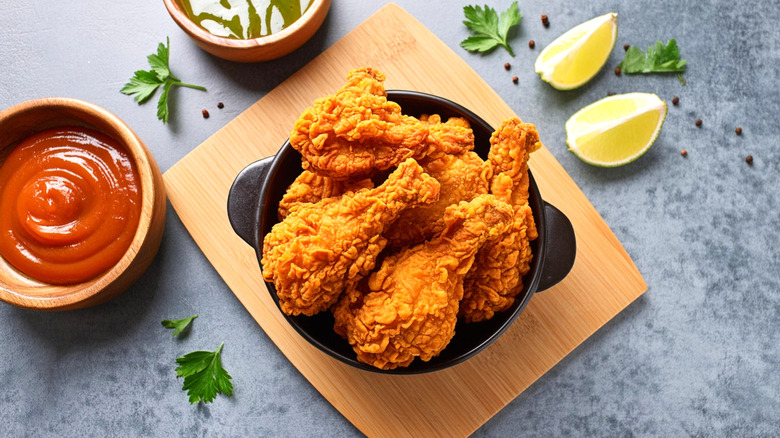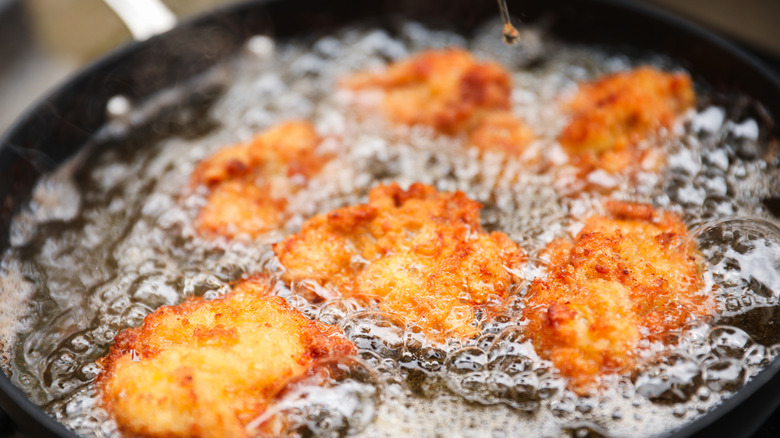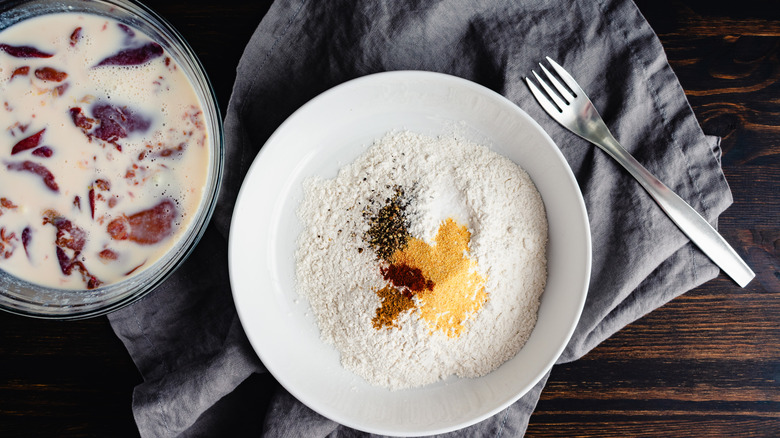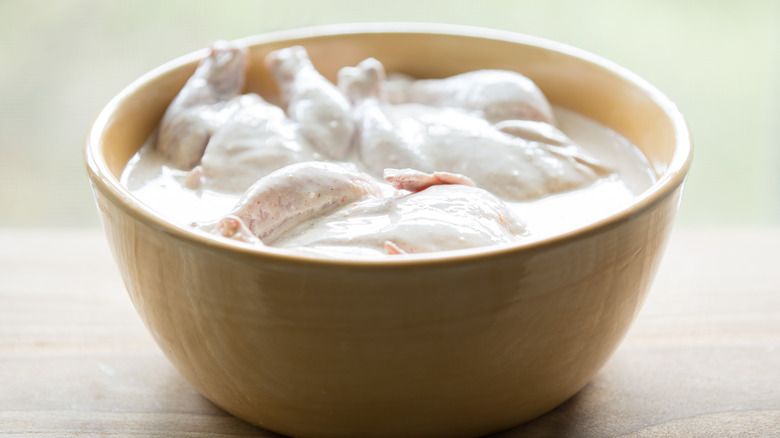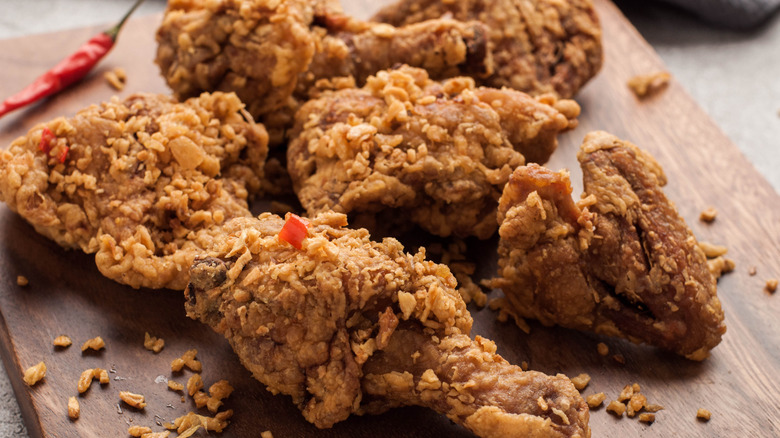Mistakes Everyone Makes With Fried Chicken (& How To Avoid Them)
Fried chicken is one of those dishes that can either be mouth-wateringly good or absolutely horrendous, especially when you try making it at home. Achieving the perfect crispy layer while maintaining the tenderness of the chicken feels impossible, yet somehow easily managed by your favorite restaurant. The truth is that there are a handful of small mistakes that most people make that are easier to fix than you might think — especially with advice from an expert.
Food Republic was lucky enough to speak with Lance Knowling, executive chef of Northridge Restaurant at the Woolverton Inn, in an exclusive interview to learn how to avoid common fried chicken mistakes. According to Knowling, most of the issues come down to a matter of patience and paying attention to the finer details of the frying process. Granted there are plenty of expert tips for making the crispiest fried chicken ever, but you can't even begin to focus on those if you haven't taken time with the basics, like, you know, having oil that's hot enough.
Thankfully, Knowling's tips help better prepare you for your cooking journey, and keep you on the right track throughout the process without making things too complicated. Fried chicken is a simple pleasure, and making it can be a simple pleasure too if you avoid some common pitfalls.
Fry at the right oil temperature
The operative word in fried chicken is fried, a cooking method you can't achieve at a low temperature. A common mistake everyone makes when cooking with oil, and, according to Lance Knowling, one that "people make when frying chicken is frying at the wrong temperature."
Knowling explained that "chicken should be fried between 300 and 350 degrees depending on thickness and style of preparation." Style of preparation in this case can mean deep versus shallow frying, which uses different amounts of oil, but both will need to be in that sweet spot temperature like Knowling recommends. This way, the chicken fully cooks through without burning the crunchy coating.
Make sure the breading sticks
The breading on your fried chicken is the key component in achieving that crispy bite we all crave — something you can't get if all the breading crumbles apart before it makes it to your mouth. Lance Knowling reminded us that "it's crucial to ensure the flour stays on the chicken to crisp up." The flour not only thickens the batter but gives the other breading ingredients something to hold onto as the chicken is fried.
Knowling told us that "using a buttermilk marinade will [help] create a nice coating when you flour the chicken." Just be sure to properly cover your chicken in both flour and buttermilk, so next time your chicken breading won't stick, you know how to fix it.
Don't forget to marinate your chicken
While the breading and frying give fried chicken that dreamy texture, that won't matter if the chicken itself is bland. As Lance Knowling explained, "Of course, a very common mistake that will impact your final dish is improperly seasoning or marinating your chicken!" Even adding basic spices like salt, pepper, cayenne, and garlic powder to your flour or marinade helps the chicken itself absorb flavor, so you aren't just relying on the crust.
Once you've added the proper spices, Knowling said, "Chicken needs to marinate at least three hours before frying; I like to marinate at least 24 hours ahead." The message here is to give your chicken plenty of time to truly take on the marinade's flavor for the tastiest results.
Have patience with your breading
We've all had the experience of cooking while we're hungry when patience just goes out the window, and we want to rush from step to step. But this mistake will actually ruin the final result of your fried chicken. According to Lance Knowling, "Lots of folks don't let their chicken absorb the coating before frying — you should let the chicken sit with the flour on it for 5-10 minutes before frying, otherwise the coating will come off in the fryer."
In the case of fried chicken, losing your breading is a nightmare scenario, especially after doing so much prep work. Letting your chicken rest is the key to keeping the final texture intact, and your patience will ultimately lead to the success of your dish.

